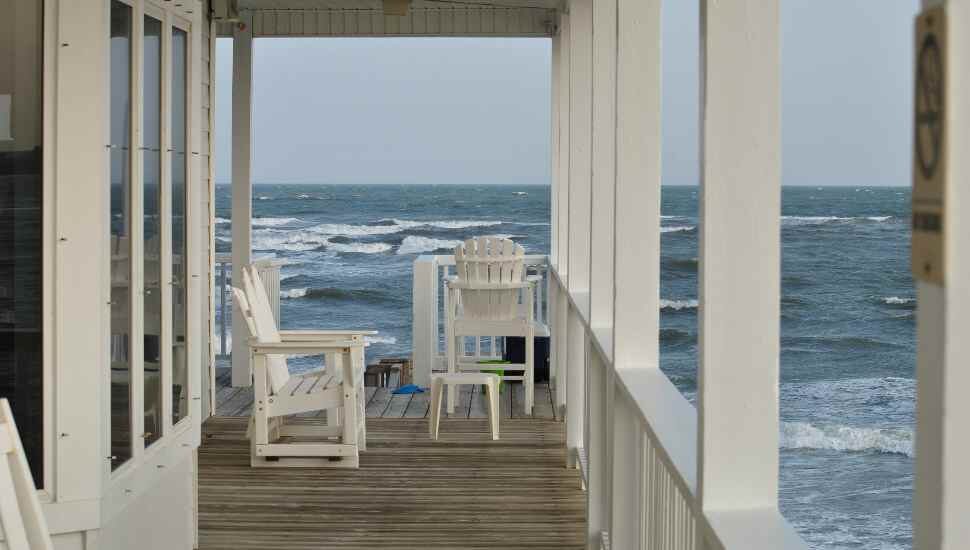Top Tips for Buying Your Dream Vacation Property

Each year, when winter and summer seasons eventually fade, vacationers to the Pocono Mountains or the Jersey Shore respectively pack their belongings, head home, and count the days before a return trip. But often a question blossoms among departing renters: Since we love it here so much, should we consider a second-home purchase instead of renting year after year? For able borrowers, second-home purchases are worth looking into.
There’s no question these acquisitions have numerous upsides: They can put a beloved destination available at a moment’s notice, without leases, car-packing, check-ins/-outs, damage fees, and pet restrictions. As a revenue producer alone, the advantages are significant, as rent can greatly improve owners’ finances.
But these investments also represent a significant financial obligation, one not to be undertaken lightly.
To aid those considering a vacation/investment property, Penn Community Bank provides some key considerations.
Vacation Home v. Investment Property
As with most major purchases, buyers should first understand what they’re buying:
- A vacation home is a property that homeowners reside in apart from their permanent address.
- An investment property is designed simply to earn money for its owners.
A vacation home may carry rigorous mortgage stipulations to protect the lender. The requirement for a 20 percent down payment, for example, is common.
But there are upsides as well (aside from the convenient R&R). A vacation home rented fewer than 14 days per year may not require income taxes payments on the rental income. Other IRS benefits can also kick in, depending on how much time owners spend onsite.
The benefits of an investment property, on the other hand, include income from tenants’ rent, plus April 15 advantages of writing off mortgage interest, maintenance, utility bills, and depreciation (as applicable).
What’s more, truly savvy investment property owners can, with a little bit of luck, parlay their residential real estate investments into multifamily properties with significant earnings potentials.
Downsides, of course, include outlays for keeping the property up to code, dealing with tenants who are late with payments (or skip them altogether), and outlaying for monthly costs — HOA fees, for example — that are owners’ responsibilities.
Timing
As with any significant financial decision, it’s best to pause before signing on the dotted line and consider all implications.
Some baselines to gauge preparedness for additional property ownership (either vacation or investment) include:
- Ability to qualify for and maintain payments on a second mortgage
- A specific set of goals for an investment property
- Finding the home that fits the purchaser’s budgets, management styles, geographic preferences, and appetites for interacting with renters
The Process
Research, Research, Research! When considering this kind of investment, it’s important to view its composite transactions step by step:
- Obtain the Second Mortgage: Second-mortgage qualifications will depend on variables that include the value of the borrower’s present home, his or her debt-to-income ratio, and the size of the down payment.
- Make the Offer: If things continue to line up — perfect property with finances that work — it’s time to make an offer. A real estate agent is a helpful ally in navigating these negotiations.
- Consider the Mortgage Options: A trusted financial consultant is invaluable in this evaluation. Mortgage options are varied and subtle in their differences and include:
- Jumbo mortgages
- Adjustable-rate mortgages
- First-time home buyer programs
- Federal Housing Administration (FHA) loans
- U.S. Department of Agriculture (USDA) loans
- Veterans Affairs (VA) loans
Penn Community Bank Is Here to Help
The experienced team at Penn Community Bank is ready to help all second-home purchasers. Its seasoned professionals can navigate buyers through the intricacies of the multiple mortgage options and guide buyers confidently to closing.
With their help, vacation-home owners can soon tap their keyless entry pads, pop into a snow- or bathing suit, and hit the slopes or the beach.
In either case — with the financial details expertly addressed — the greatest worry will be remembering the sunscreen.
About Penn Community Bank
With more than $2.5 billion in assets and over 300 team members, we are the largest mutual bank in eastern Pennsylvania. Our size and reach make us uniquely qualified to help our customers reach their own “Here We Grow” moments for their families, their businesses, and their communities.
We’re here to partner with community organizations leading the charge for positive momentum. Our growth mission is to deliver solutions that genuinely serve the best interests of our individual and commercial customers in ways they cannot possibly experience at more traditional financial institutions. As a bank powered by good values, we are a catalyst for good with the flexibility, responsiveness, and experience to guide next-level growth for everyone we serve.
Stay Connected, Stay Informed
Subscribe for great stories in your community!
"*" indicates required fields






![95000-1023_ACJ_BannerAd[1]](https://montco.today/wp-content/uploads/sites/2/2023/03/95000-1023_ACJ_BannerAd1.jpg)
![ForAll_Digital-Ad_Dan_1940x300[59]](https://montco.today/wp-content/uploads/sites/2/2022/06/ForAll_Digital-Ad_Dan_1940x30059.jpg)




































